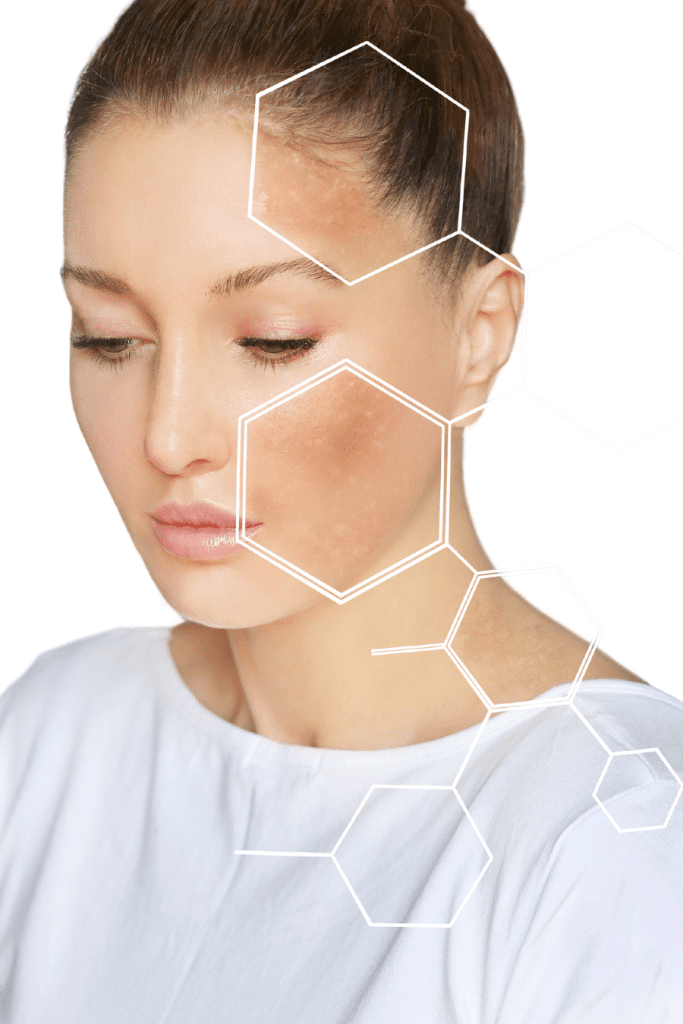CHEMICAL PEEL MELASMA MESOESTETIC

CHEMICAL PEEL MELASMA MESOESTETIC
Chemical peels for melasma with Mesoestetic are advanced treatments that use specialized chemical solutions to exfoliate the top layers of the skin. This process helps reduce dark spots, pigmentation, and melasma, a condition that causes brown or grayish patches on the skin, often due to sun exposure or hormonal changes. By promoting cell turnover, these peels help replace damaged skin with new, healthy cells, resulting in a clearer, more even complexion.
Mesoestetic chemical peels are tailored to your skin type and the severity of melasma, providing a personalized and effective solution for long-term skin improvement.
Benefits
- Reduces melasma, hyperpigmentation, and uneven skin tone.
- Improves skin texture and makes the skin appear smoother and brighter.
- Stimulates cell turnover, helping fade dark spots over time.
- Increases the absorption of skincare products for better results.
- Provides a non-invasive solution for addressing persistent pigmentation issues.
What To Expect During The Procedure
A Mesoestetic chemical peel session usually lasts about 30 minutes. The treatment starts with a deep cleanse, followed by the application of the chemical peel solution tailored to your skin’s needs. This solution exfoliates the upper skin layers, focusing on areas affected by melasma. You may feel mild tingling or warmth. After the peel is removed, soothing serums and sunscreen are applied to protect and calm the skin.
How Long Does It Last?
Results from a chemical peel can vary depending on the severity of melasma and the depth of the peel. After treatment, your skin will gradually improve over a few days to weeks as the pigmented areas fade. Multiple sessions may be recommended for long-lasting results, and regular maintenance peels can help keep melasma at bay.
Side Effects
Chemical peels are generally safe but may cause temporary redness, peeling, or sensitivity. These effects are usually mild and subside within a few days. In rare cases, deeper peels may cause prolonged redness or darker spots, so it’s important to discuss your skin type and concerns with your provider beforehand.
Before Treatment:
- Avoid Sun Exposure: Limit sun exposure and tanning for at least a week before your peel.
- Stop Using Retinoids: Discontinue retinoids and exfoliating products 3-5 days prior to your treatment.
- Hydrate: Keep your skin well-hydrated leading up to the treatment for optimal results.
- Communicate: Inform your provider of any skin concerns, allergies, or recent procedures.
After Treatment:
- Moisturize: Keep your skin hydrated with gentle moisturizers as it heals.
- Sun Protection: Apply broad-spectrum sunscreen with SPF 30 or higher to protect your skin from UV damage.
- Avoid Exfoliation: Do not use exfoliating products or scrubs for at least a week after the peel.
- Limit Sun Exposure: Stay out of direct sunlight for a few days after the procedure to prevent further pigmentation.
- Be Gentle: Avoid picking at peeling skin; let it shed naturally to avoid scarring.
